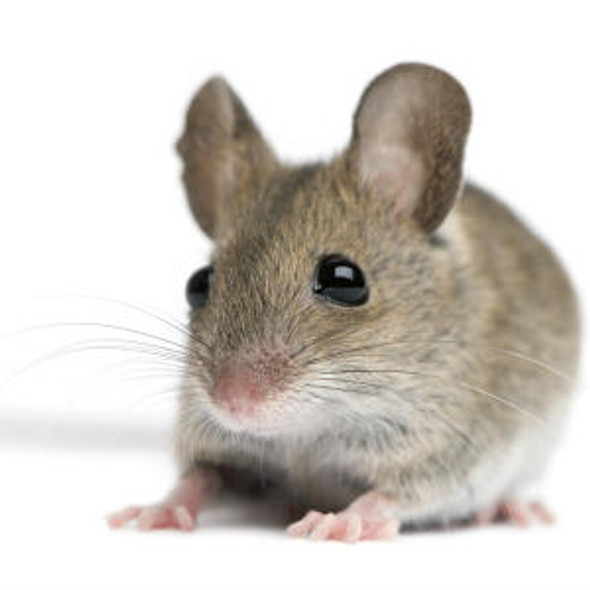Human Cell Biology ELISA Kits 4
Human DNM1 (Dynamin 1) CLIA Kit (HUES00710)
- SKU:
- HUES00710
- Product Type:
- ELISA Kit
- ELISA Type:
- CLIA Kit
- Size:
- 96 Assays
- Sensitivity:
- 46.88pg/mL
- Range:
- 78.13-5000pg/mL
- ELISA Type:
- Sandwich
- Reactivity:
- Human
- Sample Type:
- Serum, plasma and other biological fluids
- Research Area:
- Cell Biology
Description
| Assay type: | Sandwich |
| Format: | 96T |
| Assay time: | 4.5h |
| Reactivity: | Human |
| Detection method: | Chemiluminescence |
| Detection range: | 78.13-5000 pg/mL |
| Sensitivity: | 46.88 pg/mL |
| Sample volume: | 100µL |
| Sample type: | Serum, plasma and other biological fluids |
| Repeatability: | CV < 15% |
| Specificity: | This kit recognizes Human DNM1 in samples. No significant cross-reactivity or interference between Human DNM1 and analogues was observed. |
This kit uses Sandwich-CLIA as the method. The micro CLIA plate provided in this kit has been pre-coated with an antibody specific to Human DNM1. Standards or samples are added to the appropriate micro CLIA plate wells and combined with the specific antibody. Then a biotinylated detection antibody specific for Human DNM1 and Avidin-Horseradish Peroxidase (HRP) conjugate are added to each micro plate well successively and incubated. Free components are washed away. The substrate solution is added to each well. Only those wells that contain Human DNM1, biotinylated detection antibody and Avidin-HRP conjugate will appear fluorescence. The Relative light unit (RLU) value is measured spectrophotometrically by the Chemiluminescence immunoassay analyzer. The RLU value is positively associated with the concentration of Human DNM1. The concentration of Human DNM1 in the samples can be calculated by comparing the RLU of the samples to the standard curve.
| UniProt Protein Function: | DYN1: a microtubule-associated force-producing protein involved in producing microtubule bundles and able to bind and hydrolyze GTP. Most probably involved in vesicular trafficking processes. Concentrates within the presynaptic compartment and may participate in specialized neuronal functions such as rapid synaptic vesicle recycling. Part of a protein network that controls nucleation of actin from membranes. Contains one PH domain. |
| UniProt Protein Details: | Protein type:Microtubule-binding; Motility/polarity/chemotaxis; EC 3. 6. 5. 5; Vesicle; Motor; Hydrolase Chromosomal Location of Human Ortholog: 9q34 Cellular Component: Golgi apparatus; membrane coat; microtubule; myelin sheath; photoreceptor inner segment; plasma membrane; synaptic vesicle Molecular Function:D2 dopamine receptor binding; GTP binding; GTPase activity; identical protein binding; nitric-oxide synthase binding; protein binding; protein C-terminus binding; protein complex binding; protein dimerization activity; protein kinase binding Biological Process: adult locomotory behavior; axon guidance; endocytosis; endosome organization and biogenesis; ephrin receptor signaling pathway; G-protein coupled receptor internalization; protein tetramerization; receptor-mediated endocytosis; sensory perception of sound; synaptic transmission, GABAergic Disease: Epileptic Encephalopathy, Early Infantile, 31 |
| NCBI Summary: | This gene encodes a member of the dynamin subfamily of GTP-binding proteins. The encoded protein possesses unique mechanochemical properties used to tubulate and sever membranes, and is involved in clathrin-mediated endocytosis and other vesicular trafficking processes. Actin and other cytoskeletal proteins act as binding partners for the encoded protein, which can also self-assemble leading to stimulation of GTPase activity. More than sixty highly conserved copies of the 3' region of this gene are found elsewhere in the genome, particularly on chromosomes Y and 15. Alternatively spliced transcript variants encoding different isoforms have been described. [provided by RefSeq, Jul 2008] |
| UniProt Code: | Q05193 |
| NCBI GenInfo Identifier: | 172046078 |
| NCBI Gene ID: | 1759 |
| NCBI Accession: | Q05193. 2 |
| UniProt Secondary Accession: | Q05193,Q5SYX0, Q5SYX2, Q6P3T6, Q86VD2, A6NLM6, |
| UniProt Related Accession: | Q05193 |
| Molecular Weight: | 95,895 Da |
| NCBI Full Name: | Dynamin-1 |
| NCBI Synonym Full Names: | dynamin 1 |
| NCBI Official Symbol: | DNM1 |
| NCBI Official Synonym Symbols: | DNM; EIEE31 |
| NCBI Protein Information: | dynamin-1 |
| UniProt Protein Name: | Dynamin-1 |
| Protein Family: | Dynamin |
| UniProt Gene Name: | DNM1 |
| UniProt Entry Name: | DYN1_HUMAN |
As the RLU values of the standard curve may vary according to the conditions of the actual assay performance (e. g. operator, pipetting technique, washing technique or temperature effects), the operator should establish a standard curve for each test. Typical standard curve and data is provided below for reference only.
| Concentration (pg/mL) | RLU | Average | Corrected |
| 5000 | 58166 64346 | 61256 | 61233 |
| 2500 | 32479 36229 | 34354 | 34331 |
| 1250 | 18823 17515 | 18169 | 18146 |
| 625 | 8681 10103 | 9392 | 9369 |
| 312.5 | 4908 4758 | 4833 | 4810 |
| 156.25 | 2524 2498 | 2511 | 2488 |
| 78.13 | 1300 1378 | 1339 | 1316 |
| 0 | 22 24 | 23 | -- |
Precision
Intra-assay Precision (Precision within an assay): 3 samples with low, mid range and high level Human DNM1 were tested 20 times on one plate, respectively.
Inter-assay Precision (Precision between assays): 3 samples with low, mid range and high level Human DNM1 were tested on 3 different plates, 20 replicates in each plate.
| Intra-assay Precision | Inter-assay Precision | |||||
| Sample | 1 | 2 | 3 | 1 | 2 | 3 |
| n | 20 | 20 | 20 | 20 | 20 | 20 |
| Mean (pg/mL) | 233.59 | 449.68 | 2231.50 | 214.88 | 427.54 | 2234.09 |
| Standard deviation | 22.70 | 51.08 | 254.61 | 26.09 | 40.83 | 232.12 |
| C V (%) | 9.72 | 11.36 | 11.41 | 12.14 | 9.55 | 10.39 |
Recovery
The recovery of Human DNM1 spiked at three different levels in samples throughout the range of the assay was evaluated in various matrices.
| Sample Type | Range (%) | Average Recovery (%) |
| Serum (n=5) | 83-96 | 90 |
| EDTA plasma (n=5) | 97-113 | 104 |
| Cell culture media (n=5) | 100-113 | 106 |
Linearity
Samples were spiked with high concentrations of Human DNM1 and diluted with Reference Standard & Sample Diluent to produce samples with values within the range of the assay.
| Serum (n=5) | EDTA plasma (n=5) | Cell culture media (n=5) | ||
| 1:2 | Range (%) | 96-113 | 95-109 | 96-109 |
| Average (%) | 103 | 103 | 103 | |
| 1:4 | Range (%) | 87-99 | 87-99 | 97-115 |
| Average (%) | 94 | 93 | 105 | |
| 1:8 | Range (%) | 90-106 | 85-100 | 89-103 |
| Average (%) | 97 | 92 | 94 | |
| 1:16 | Range (%) | 101-114 | 94-108 | 102-114 |
| Average (%) | 107 | 99 | 108 |
An unopened kit can be stored at 4°C for 1 month. If the kit is not used within 1 month, store the items separately according to the following conditions once the kit is received.
| Item | Specifications | Storage |
| Micro CLIA Plate(Dismountable) | 8 wells ×12 strips | -20°C, 6 months |
| Reference Standard | 2 vials | |
| Concentrated Biotinylated Detection Ab (100×) | 1 vial, 120 µL | |
| Concentrated HRP Conjugate (100×) | 1 vial, 120 µL | -20°C(shading light), 6 months |
| Reference Standard & Sample Diluent | 1 vial, 20 mL | 4°C, 6 months |
| Biotinylated Detection Ab Diluent | 1 vial, 14 mL | |
| HRP Conjugate Diluent | 1 vial, 14 mL | |
| Concentrated Wash Buffer (25×) | 1 vial, 30 mL | |
| Substrate Reagent A | 1 vial, 5 mL | 4°C (shading light) |
| Substrate Reagent B | 1 vial, 5 mL | 4°C (shading light) |
| Plate Sealer | 5 pieces | |
| Product Description | 1 copy | |
| Certificate of Analysis | 1 copy |
- Set standard, test sample and control (zero) wells on the pre-coated plate and record theirpositions. It is recommended to measure each standard and sample in duplicate. Note: addall solutions to the bottom of the plate wells while avoiding contact with the well walls. Ensuresolutions do not foam when adding to the wells.
- Aliquot 100µl of standard solutions into the standard wells.
- Add 100µl of Sample / Standard dilution buffer into the control (zero) well.
- Add 100µl of properly diluted sample (serum, plasma, tissue homogenates and otherbiological fluids. ) into test sample wells.
- Cover the plate with the sealer provided in the kit and incubate for 90 min at 37°C.
- Aspirate the liquid from each well, do not wash. Immediately add 100µL of BiotinylatedDetection Ab working solution to each well. Cover the plate with a plate seal and gently mix. Incubate for 1 hour at 37°C.
- Aspirate or decant the solution from the plate and add 350µL of wash buffer to each welland incubate for 1-2 minutes at room temperature. Aspirate the solution from each well andclap the plate on absorbent filter paper to dry. Repeat this process 3 times. Note: a microplatewasher can be used in this step and other wash steps.
- Add 100µL of HRP Conjugate working solution to each well. Cover with a plate seal andincubate for 30 min at 37°C.
- Aspirate or decant the solution from each well. Repeat the wash process for five times asconducted in step 7.
- Add 100µL of Substrate mixture solution to each well. Cover with a new plate seal andincubate for no more than 5 min at 37°C. Protect the plate from light.
- Determine the RLU value of each well immediately.






